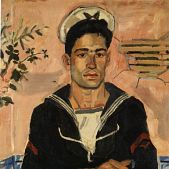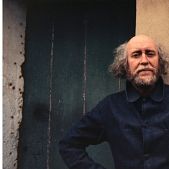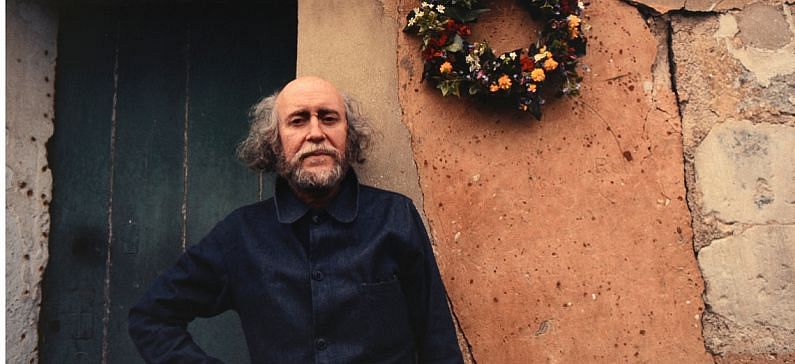
Revolutionary and classic
Yannis Tsarouchis has remained in history as the contemporary Greek artist who made tradition popular and Byzantine art known across the Greek border, with the help of Iolas, who inspired him to paint neoclassical buildings and sailors. He was a restless personality who never ceased to work and be involved with the essence of the art of painting.
The joy and the wonder of life are mainly expressed in Yannis Tsarouchis’ work. He tried to balance the great traditions and capture the eternal artistic values, with his paintings embracing assimilated folk and folk elements, especially the port of Piraeus. He is considered one of the greatest modern Greek painters with international prominence, especially in France.
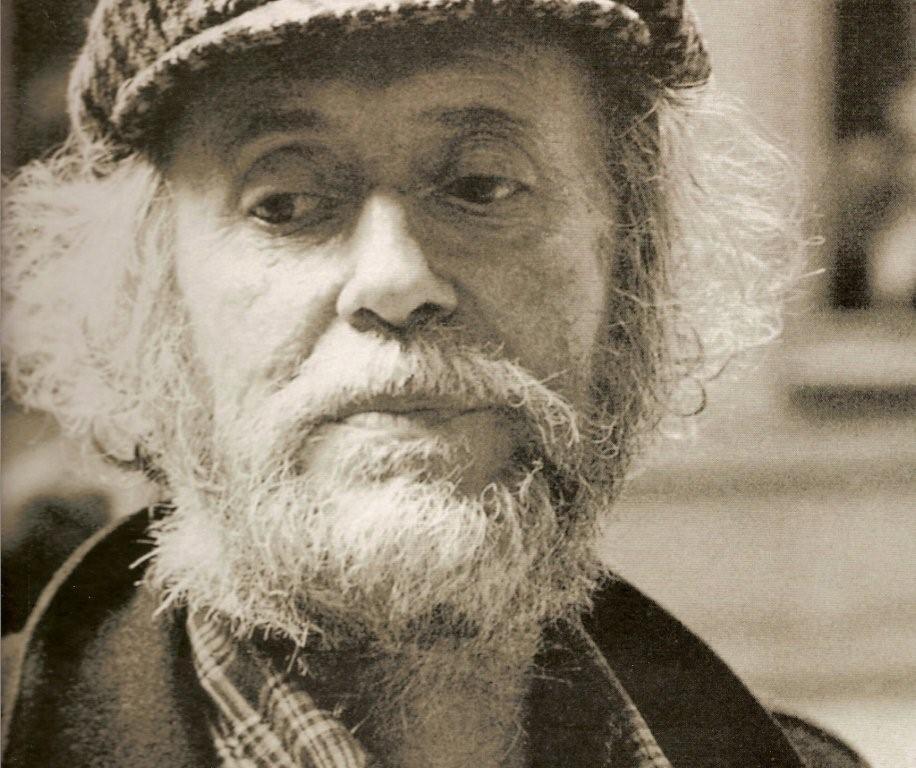
At the same time, he worked as a stage designer in both Greek and foreign theaters with great success. This is due to the establishment of the sailor’s presence in dance or not – which was even considered necessary – in almost all the of Greek cinema that was filmed in popular centers.
Born in Piraeus, on January 13, 1910, he was the second son of the merchant from Arcadia, Athanasios Tsarouchis, and Maria Monarchides, who originated from Psara. Although he had been painting and designing costumes since the age of six when he was a young boy he wanted to become an acrobat because he “liked the racetrack very much”. His parents, on the other hand, imagined him as a great lawyer or mechanic. The neoclassical building in which he grew up in, at the junction of Vasileos Georgiou Avenue with Lucas Rallis Street, no longer exists, while he spent part of his childhood at the luxurious residence of the Metaxas family, at his aunt’s, Despina Metaxa, who was a sister of his mother.
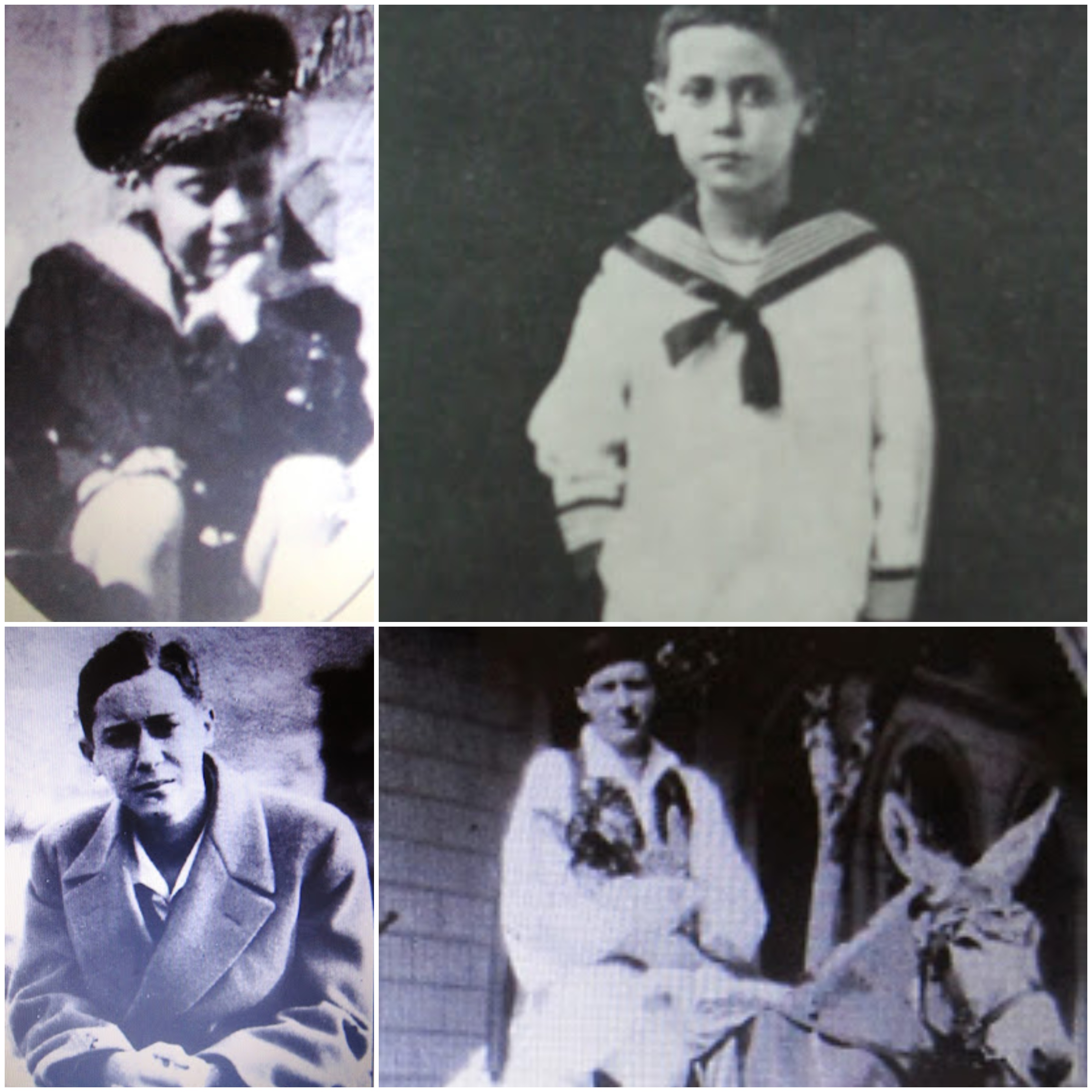
Although the Tsarouchis family moved to Athens in 1927, Piraeus and the Shadow Theater of Karagiozis were deeply rooted in the artist’s soul, both for the bustling environment in which he was raised and influenced artistically, as well as for the poor folk neighborhoods where he often escaped in his childhood.
Apart from painting, Yannis Tsarouchis, already in 1928, had been actively involved with the theater as well. In fact, the costumes and theater props for the performance of the National Theater Princess Malena had been edited by him.
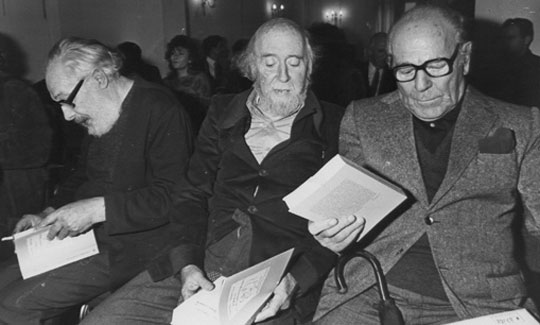 Karolos Koun, Yannis Tsarouchis, Alexis Minotis
Karolos Koun, Yannis Tsarouchis, Alexis Minotis
His first works were exhibited in the Asylum of Art in 1929 and his success led him to attend the School of Fine Arts of the Technical University of Athens until 1935, with some of his professors being Jakovidis, Vikatos and Parthenis. Along with the School of Fine Arts, during 1931-1934, Yannis Tsarouchis took up important lessons for life and art, as he was also assistant to Fotis Kontoglou, who was introduced to the art of Byzantine hagiography. Collaborations with Elli Papadimitriou and Karolos Koun followed, where, together with Dionisis Devaris, founded the Laiki Skini in 1934.
In 1935-1936, after visiting Constantinople, he made his first trip to the capital of France and Italy. His desire was to get to know the artistic trends of the Renaissance and Impressionism, but also to see works of great artists, such as Matisse. There, he discovered the work of Theophilos and met artists such as Henri Matisse and Alberto Giacometti.
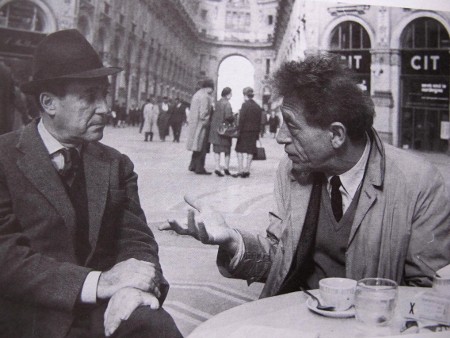 Alberto Alberto Giacometti and Yannis Tsarouchis
Alberto Alberto Giacometti and Yannis Tsarouchis
In 1938, two years after his return to Greece, he made his first solo exhibition at the Alexopoulou store on Niki Street in Athens with works featuring a special personality praised by the then art critics, Papantoniou and Kapetanakis.
In 1940, he was recruited and served in the Mechanics, while in the years of Occupation he founded a private school of painting, where young people who later became proficient painters such as Kosmas Xenakis, Minos Argyrakis, Nikos Georgiades and Rosita Sokos studied for a short period of time. In 1947, he held two solo exhibitions with watercolors and theatrical sketches and in 1950 went back to Paris, where, a year later, exhibited his works in Paris and London.
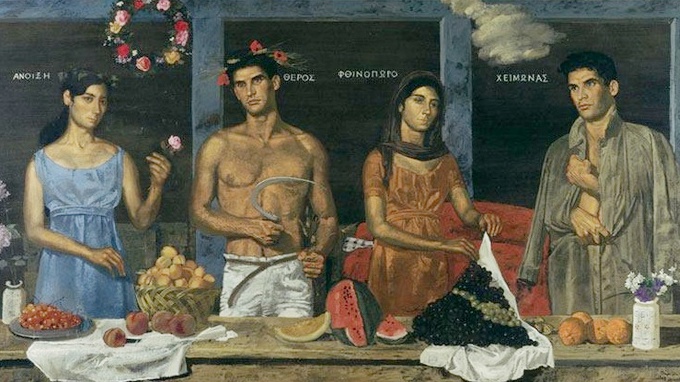
In 1953, he signed a contract with the Iolas Gallery in New York and designed sets and costumes for the classic work “Romeo and Juliet”, which was published in 1954 in the Royal Garden. Two years later, he was nominated for the Guggenheim Prize, and in 1958, along with Yannis Moralis and sculptor Antonis Sohos, represented Greece at the Venice Biennial.
In 1966, Yannis Tsarouchis painted the unique portrait of Jenny Karezi, a painting of invaluable value that depicted the unique beauty of the beloved Greek actor. The painting now adorns the corridors of the second floor of the Hellenic Parliament and is considered one of the many treasures in the building.
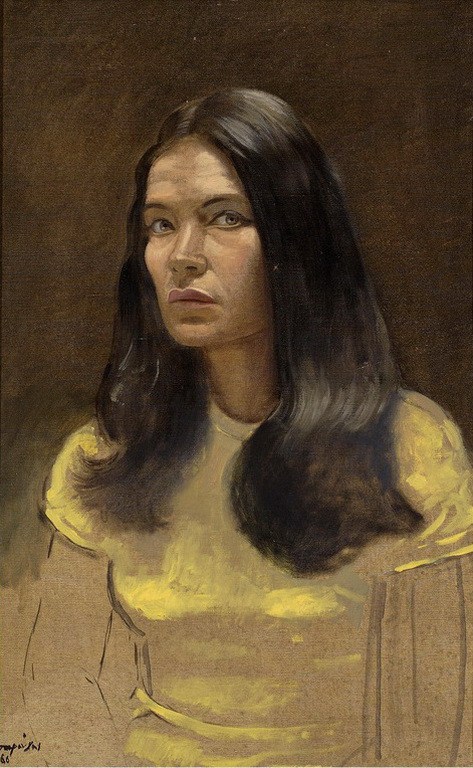
Before settling permanently in Paris in 1967, Yannis Tsarouchis, a member of the Chamber of Fine Arts of Greece, traveled there at least twice more, one to take a breath from the artistic and political suffocation of the junta and the other to follow his sister for her treatment.
In 1977, he put on Euripides’ “Trojan Women” in his own Modern Greek performance, with his own teaching and stage design, a work that concentrated his aesthetics and worldview of life, art and ancient drama in the Caplan garage. It was the day Maria Callas passed away; he went on the stage and said: “I announce with great sadness that Maria Callas died. She was a goddess and will forever be immortal. But let’s never forget that the stunning Greek Lyre Scene found her inadequate and forced her to leave Greece. “
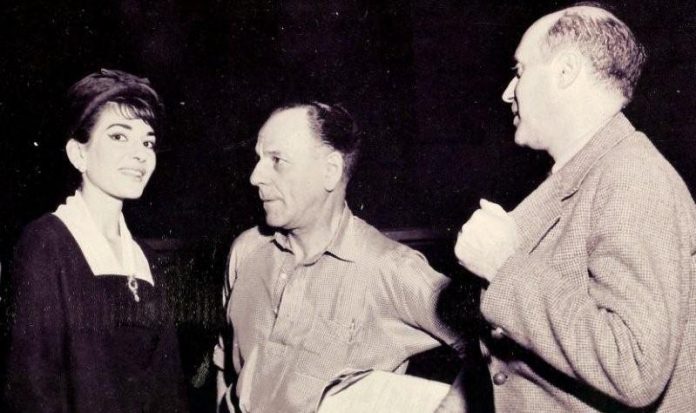 Maria Callas, Yannis Tsarouckis, Yannis Minotis
Maria Callas, Yannis Tsarouckis, Yannis Minotis
In 1981, he founded the Yannis Tsarouchis Foundation and a year later, in 1982, the Yannis Tsarouchis Museum in Marousi was inaugurated in order to project and study his work. He died on July 20, 1989, at the age of 79, and left Euripides’ “Orestes” – which he had taken over – unfinished.
While he was alive, the distinguished Yannis Tsarouchis, stayed in his Museum, in a simple bedroom with an iron bed, old photographs of his own and his mother, and numerous books along with his painting notes. It was a room of personalities and schools, a living organism.
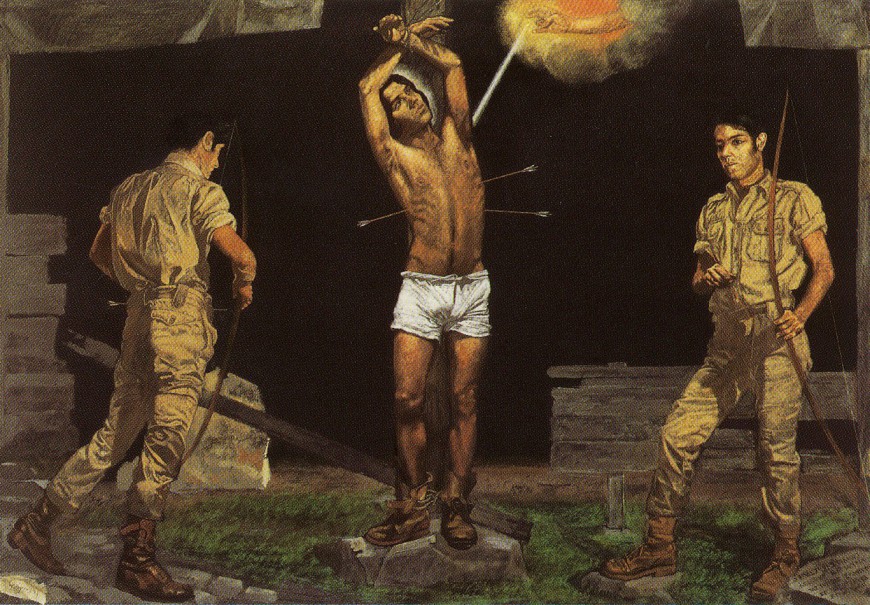
The paintings of the great painter show the greatness of the Greek tradition, the Greek folklore, as well as elements from the area that he grew up, Piraeus. He always tried to learn new things and techniques. He has said for his work, “Two are my basic quests despite all the thousand differences that my works have; the neoclassical which tries to assimilate the ancient classic ideal, as expressed by the Baroque and the Renaissance. My other tendency is to express all my objections to my own ideal. ”
It is worth mentioning that the painter was involved with the issue of homosexual love, which appeared somewhat disguised in some of his works. Although the era was more conservative than today, Tsarouchis and his subject matter were treated with respect.
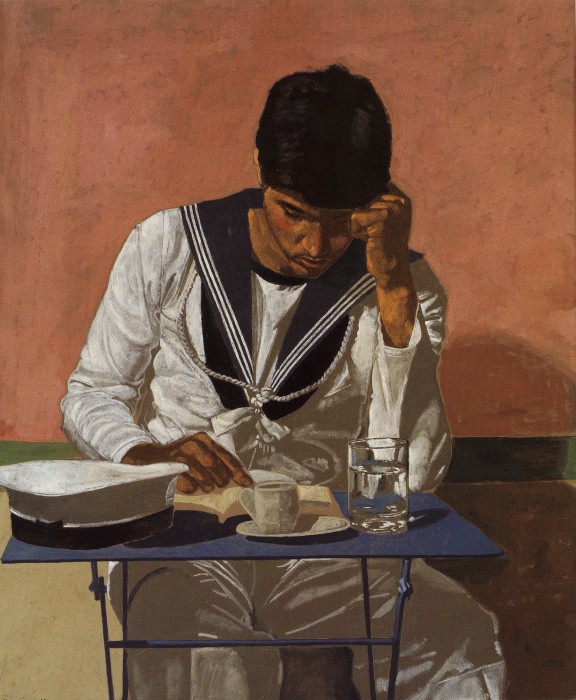
When asked by journalist George Gillson if there is a general message he is trying to convey through his work, Tsarouchis replied, “I dare not say, in case I look like I pretend to be a great artist. This message is respect for life, reverence for life, love for God. All expressed through my paintings and colors. I want to find peace and tranquility in my life and to share it with other people. “
Then, answering another question, he said, “If I were to relive my artistic career, I would look for a good craftsman to learn the technique of painting well and not to go to the school where the professors are trying to fill their nomination with straw. And of course, I would go to a field to learn more seriously the cultivation of the earth to have a second occupation to give me independence. People need to learn how to make their food as farmers. “
And to the journalist’s question, “What advice would you give to young artists?” Tsarouchis answered, “The same I give myself. To find an estate to cultivate. And to confess with their art, to talk about their lives, for what they are interested in. When one confesses, millions of people find satisfaction and feel lighter. “
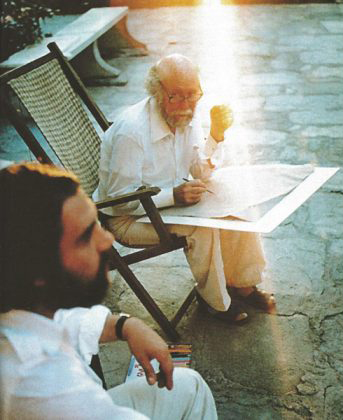 Vangelis Papathanasiou posing for John Tsarouhis
Vangelis Papathanasiou posing for John Tsarouhis
His niece, Niki Grypari-Tsarouhis, who spent a lot of time on his side and “studied” beside him, has said that Yannis Tsarouchis liked to discuss “painting, the period of the junta, Greece and freedom. Politically, however, he did not belong anywhere. He was an anarchist. Not in the sense that the anarchist term has today. He was never a member of any party, he did not belong anywhere, like other artists and creators, such as Ritsos, Theodorakis, Hadjidakis, and had friends from all parties. “
His raw materials were not stable, according to Ms. Grypari. “He was experimenting. He kept on changing. He used oils, tempera, pastel. He used to say “I found a magic remedy”. He had various fads and tried new materials. He prepared his canvases on his own because he had done relevant courses at Beaux-Arts. Among the colors, he liked ochre, red-brown, white, black. He often made a sky in gray, black and white. It was his own kind of painting. And I know that whatever he did, he did with passion and wanted to finish quickly. More time, a lot of time took the preparation of a subject. A typical example is his months and the Four Seasons. “
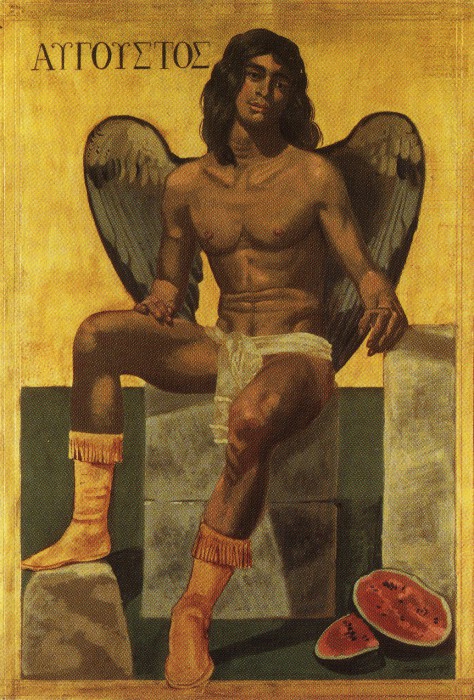
When he painted, he was talking with the model or his friends and assistants and listening to music. His range was enormous, according to Gripari; operas, folk songs, Bellou, Tsitsanis and Mouflouzelis. “Some gardeners had forgotten records of the Beatles and the Rolling Stones. He played and listened to them too. “
His beloved painter was Delacroix, Vermeer, Karavazzo, “many, too many. He often went to the Louvre. And each time he had another loved one. He always saw the good qualities of new painters and never called the job of anyone’s “a mess.” He said his witticisms, his gossip, his jokes about people, but he never spoke ill of anyone. “
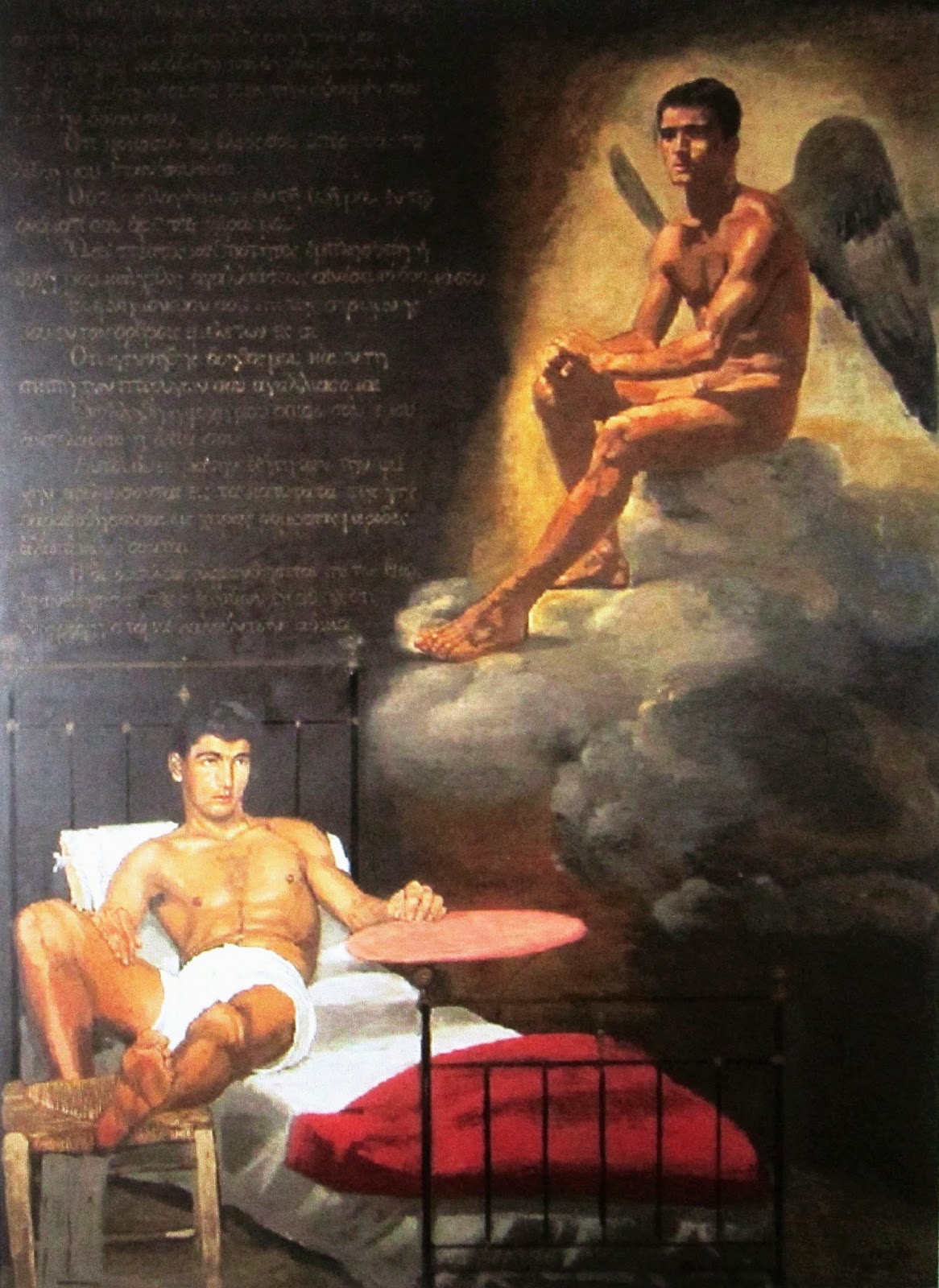
His relationship with money was monumental, as his friends remember him having the banknotes wrinkled in his pockets, pulling them out and paying for the whole company of people. His personal expenses, his personal luxuries, were the books he bought and the discs. He bought monographs and albums with the work of other painters, essays, poetry, literature. He read a lot of things, and autobiographies, such as Mistinguett, whose songs he had included in his “Trojan Women” and in “Helen of Troy”.
Prior to his death, he read the Requiem or it was read to him. “There is not a reason. He was not afraid of death. Don’t ask me to describe him as a person. He had a human personality. He helped people. He knew that when he lent money, it wouldn’t be returned, but gave it anyway. He was only strict around job matters. It was a period of time that there was no professionalism and for him to succeed, things had to be done just as he wanted them. He was too much of a hard worker. He always worked since the morning. And at the end of his life, he woke up at 5, drank coffee, read, and then started his job. In Paris, he was working with the light of day. “
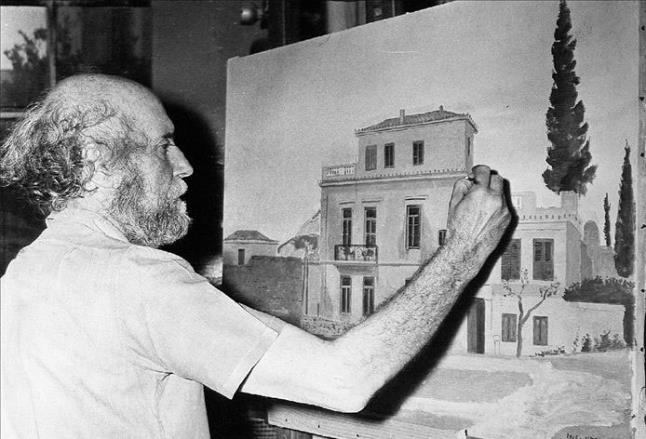
The great Greek poet Odysseas Elytis had said about Yannis Tsarouchis, “A revolutionary is not at all classical. But with Tsarouchis, that was the case. On the day when this painter dared to seek Hermes not on Olympus but in “Ophilus café”, a myth descended from books to life, while the artist’s eye was forced to look at the world.
In other words, the modern Greek reality, deformed by false philology until then, came to take its natural place in the plastic interests of our time. And the painter, located within the space that it defined for him, had taken on the responsibility to find the unique expression that fitted its idiosyncrasy.
To the extent that Tsarouchis seemed worthy to cleanse the idol of Hellenism of the excess of gold, he is a revolutionary who did not attempt to destroy but to discover a tradition. But to the extent that he succeeded in making use of its secret teachings, though, he is a classic.”
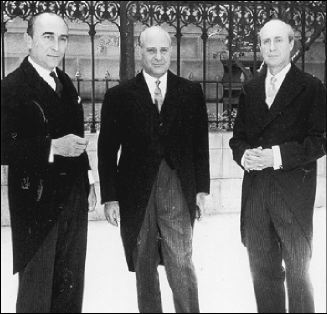 Yannis Moralis, Odysseas Elytis and Yannis Tsarouchis
Yannis Moralis, Odysseas Elytis and Yannis Tsarouchis
In addition to a painter, director, stage designer and costume designer, Yannis Tsarouchis was a writer and translator of ancient tragedies. An erudite artist full of humor, but also a mordancy, with which he did not hesitate to comment on Greece and the social reality. “In Greece, you are whatever you state you are” is one of the many quoted he left in his bold narratives. Tsarouchis, a very special and charismatic man, spoke more than many artists of his generation about Greek society and its limitations.




